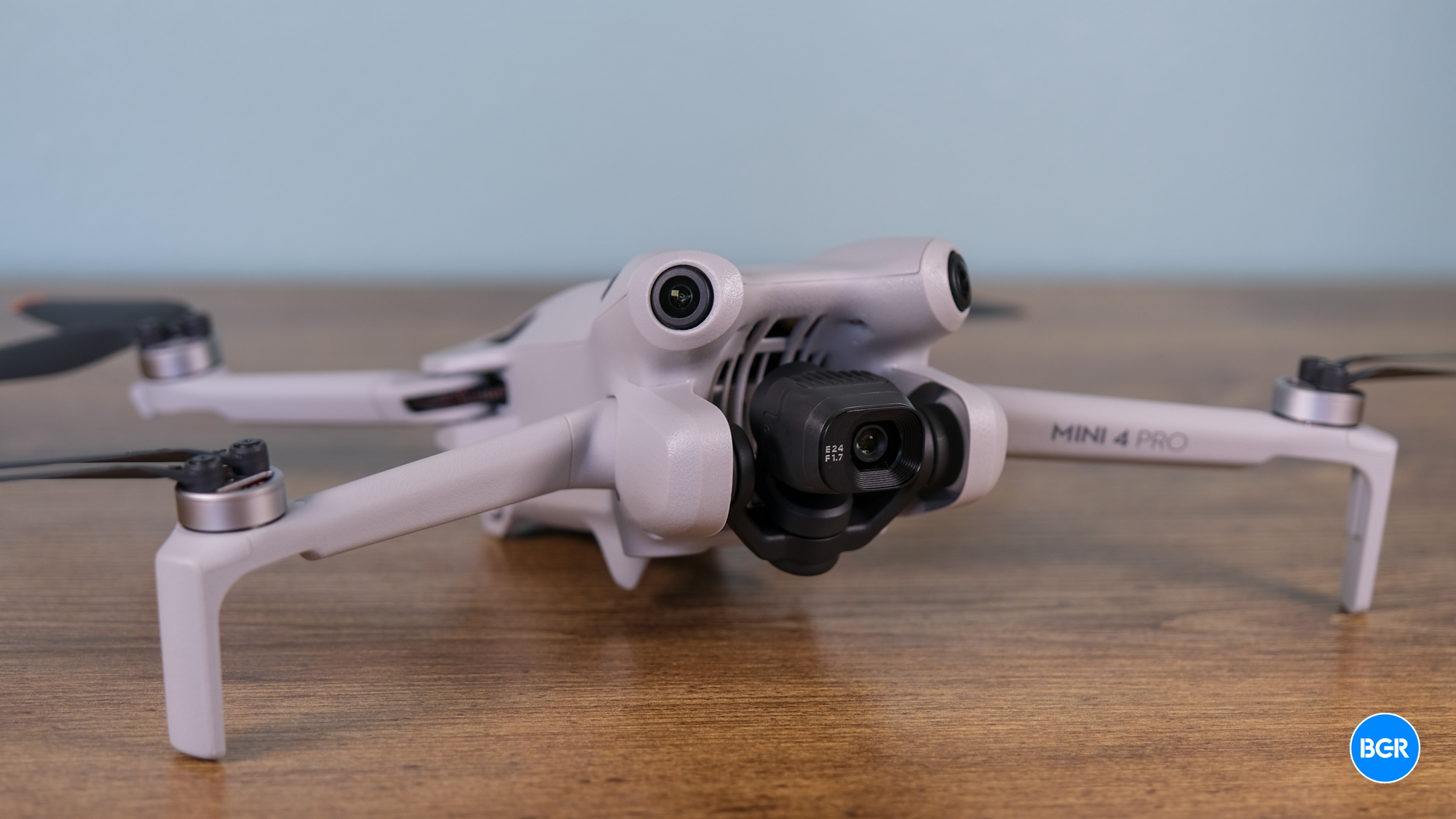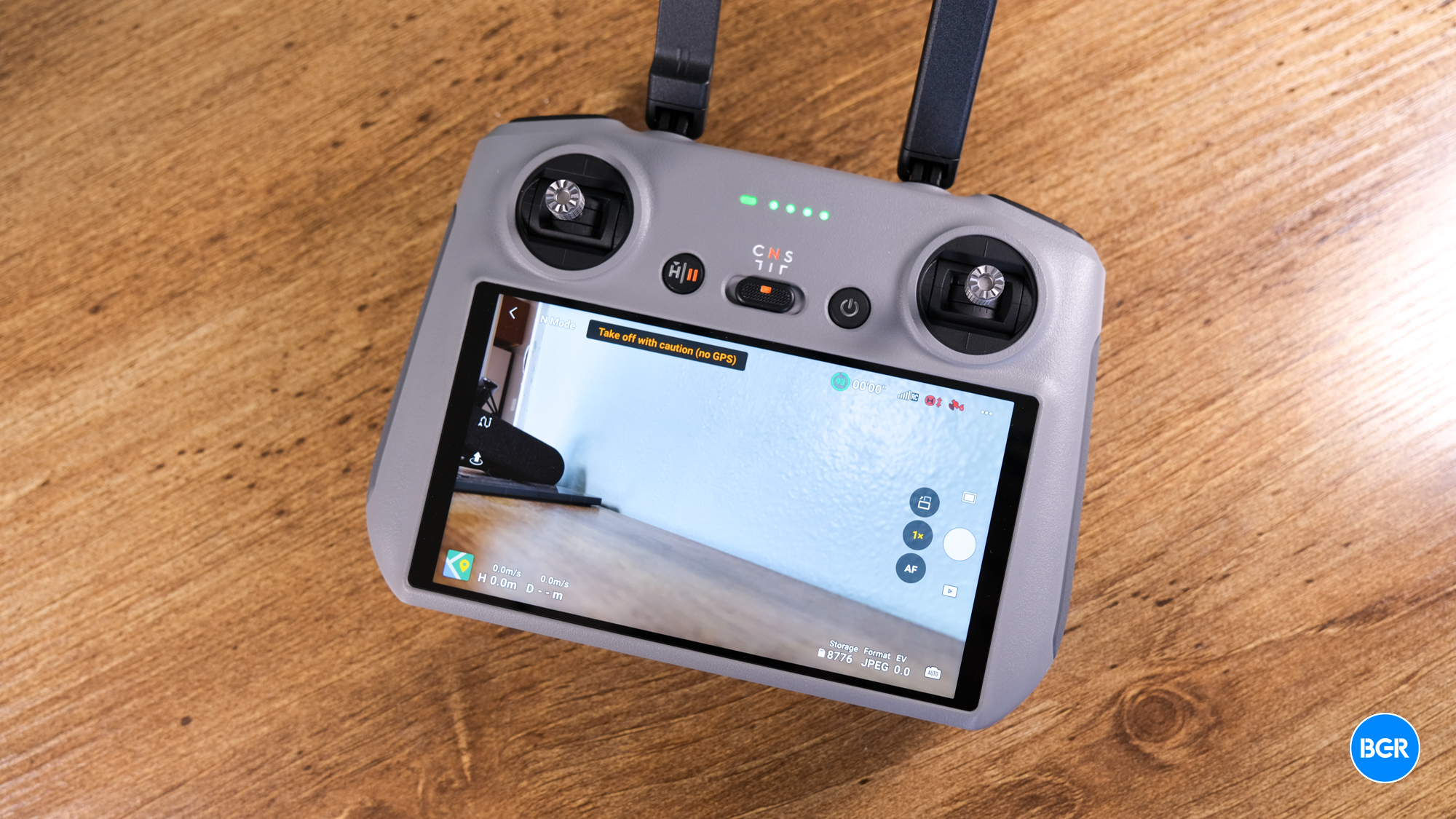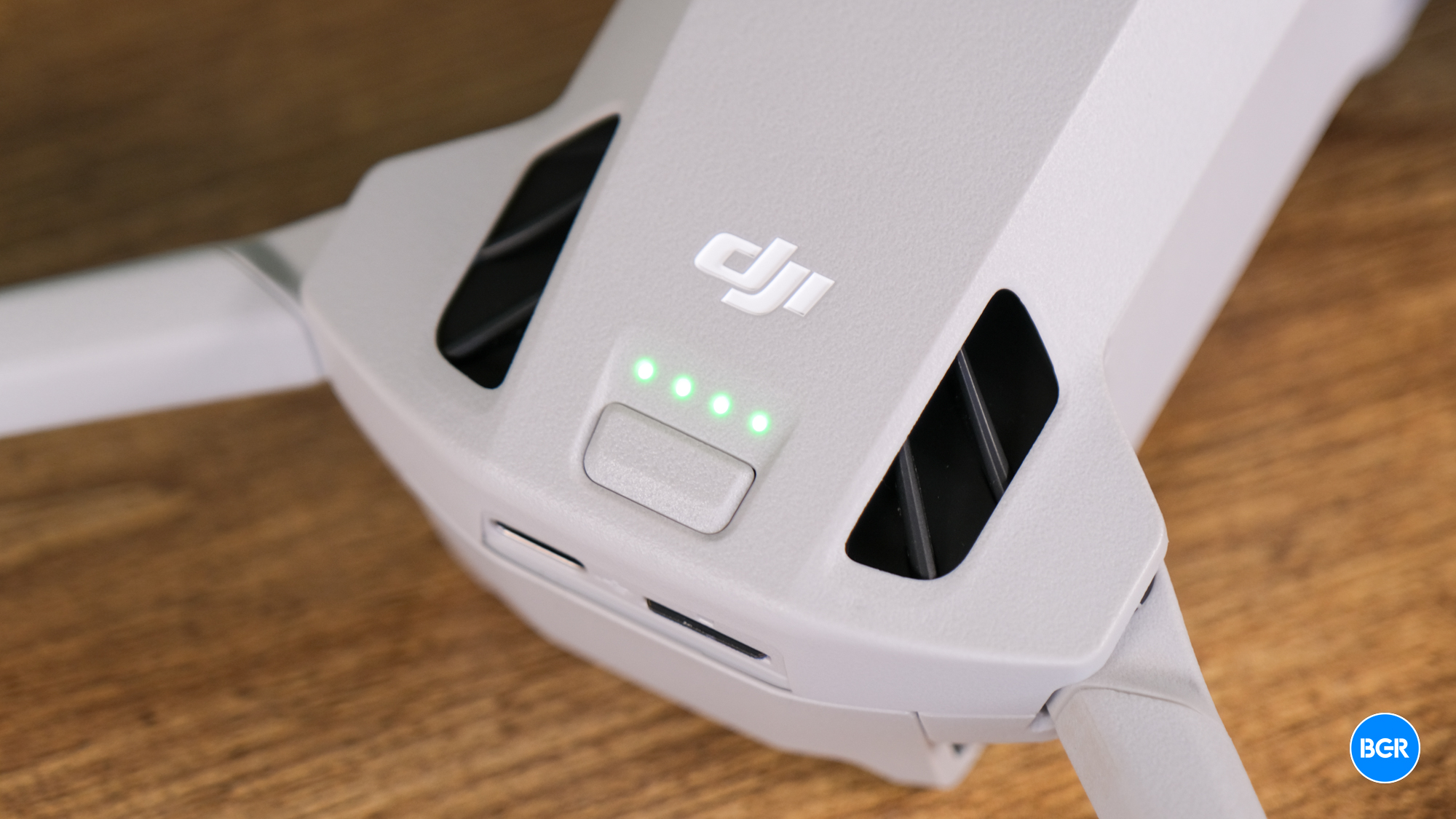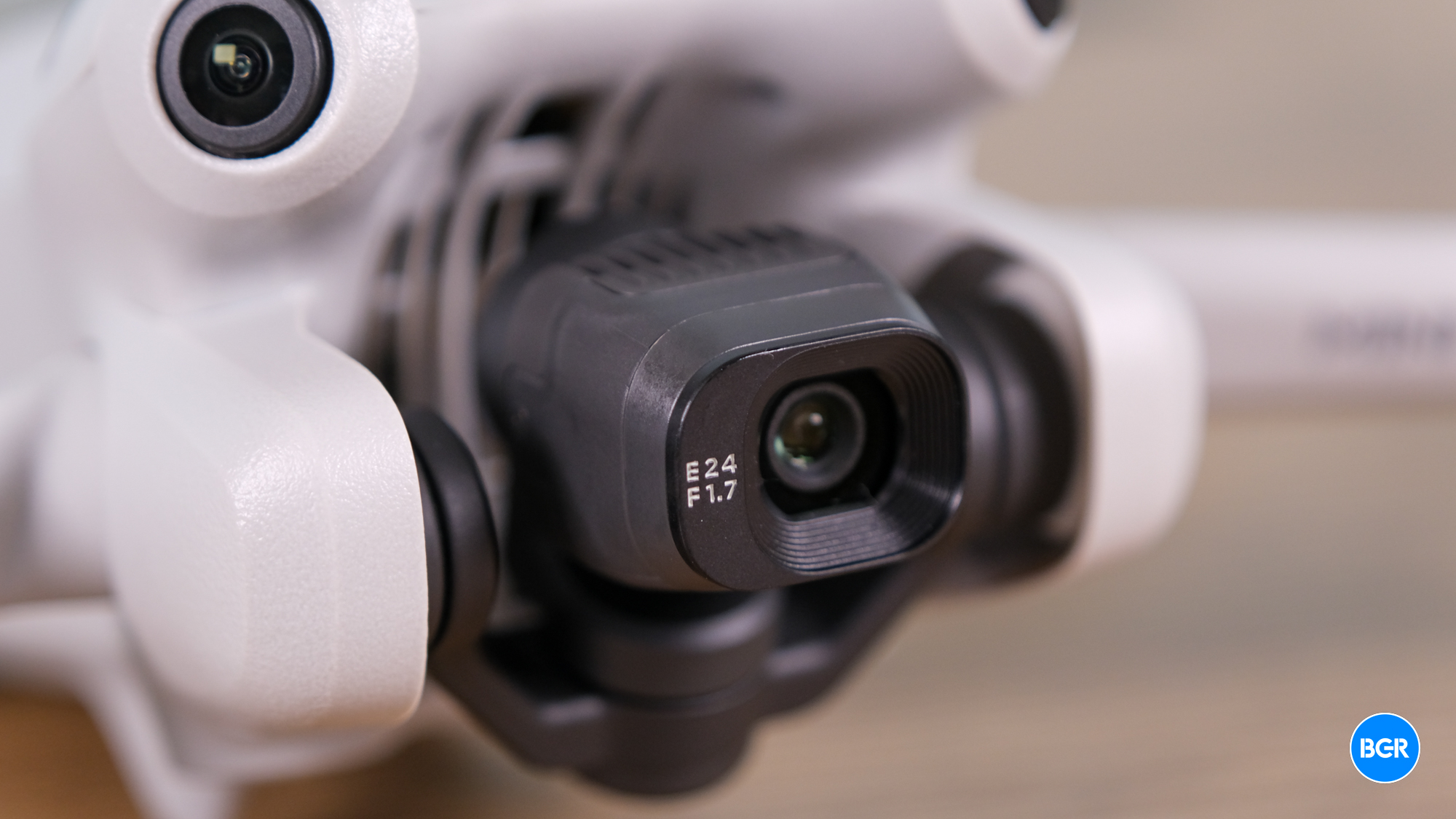The DJI Mini 4 Pro makes DJI’s second-smallest drone even better than before, with improved obstacle avoidance and better camera tech.
Pros Sleek design Excellent obstacle avoidance Great camera quality Lightweight Fun!Buy FromList PriceSale Price
$759$759See It
The DJI Mini series has long offered a compelling option for those who like the idea of a drone but don’t want to jump through the hoops of FAA registration or pay the high price often associated with larger drones. Now, the DJI Mini is on its fourth generation, led by the Mini 4 Pro.
The Mini 4 Pro may look more or less like the Mini 3 Pro before it, but the new drone is actually packed with some impressive new tech. Notably, there’s a ton of new camera tech, with better sensing technology that ensures the drone is better at avoiding obstacles — even smaller ones.
But while the DJI Mini 4 Pro isn’t as expensive as some of the larger drones, it’s certainly not cheap. At a starting price of $759, is the new drone worth buying? I reviewed last year’s Mini 3 Pro, and I’ve been flying the Mini 4 Pro for a while now to find out just how much better it really is.
DJI Mini 4 Pro design
As mentioned, the overall design of the DJI Mini 4 Pro is more or less the same as the previous generation. That includes coming in at 249 grams, which seasoned drone flyers will know is the upper limit of drones that don’t have to be registered with the FAA (anything 250g and above does).
Tech. Entertainment. Science. Your inbox.
Sign up for the most interesting tech & entertainment news out there.
By signing up, I agree to the Terms of Use and have reviewed the Privacy Notice.
 Image source: Christian de Looper for BGR
Image source: Christian de Looper for BGR
The drone is still a light gray, with four slim arms that fold out. When folded, the drone is very compact and easy to store. The only real difference between this drone and previous-generation DJI Mini drones is the fact that this one has the new sensor suite on the top.
I like the general design of the DJI Mini 4 Pro — but I do hope DJI works on at least making it a little more customizable in the future. At this point, DJI drone designs are starting to feel a little stale, and even the option of different colors would be nice.
DJI Mini 4 Pro controller design
Of course, the design of the drone itself is only one piece of the puzzle, and when you’re flying the drone, you won’t see it at all. Instead, you’ll see and interact with the controller, and there are a few controllers you can use with the DJI Mini 4 Pro.
 Image source: Christian de Looper for BGR
Image source: Christian de Looper for BGR
You can use the DJI RC-N2, which relies on your phone for the video feed and some of the controls, or you can use the DJI RC 2, which is an all-in-one controller that has a 5.5-inch screen built into it. If you have a high-end phone, its display is probably better and bigger than the one built into the DJI RC 2 controller, but of course, having an all-in-one solution is much more convenient. We are reviewing the Mini 4 Pro with the DJI RC 2 controller.
Flying the DJI Mini 4 Pro
Of course, the design of the DJI Mini 4 Pro is relatively unimportant compared to actually flying the drone. And, thankfully, it flies excellently. That’s to be expected of a company that has become the go-to for consumer drones, but every time I review a DJI drone, I remember how well they fly — and how fun they are to fly.
The overall experience of flying the drone remains largely unchanged compared to previous generations, but that’s a good thing. There are quick buttons to take off, return home, and land, and different modes depending on your skill level. Like previous models, you can switch to more advanced flying modes if you choose, but you’ll sacrifice some of the obstacle avoidance tech to do so. For some, it’ll be worth it — for others, not so much.
 Image source: Christian de Looper for BGR
Image source: Christian de Looper for BGR
The drone supports DJI’s Ocusync 4 technology, which means that it’s rated for transmission up to 20km (12 miles) away. In practice, you won’t get anywhere near that, but it’s still relatively impressive, and that number seems to grow every year or so, which is nice to see.
As mentioned, the drone also features a new Omnidirectional Obstacle Sensing technology, which essentially means that there’s 360-degree coverage for sensors to keep track of obstacles. Considering the fact that previous-generation drones couldn’t sense obstacles in certain directions, this is a nice step forward. I didn’t thoroughly test this — I wasn’t about to try and fly the drone into a tree. But I did test the basics, and it seemed to work pretty well.
 Image source: Christian de Looper for BGR
Image source: Christian de Looper for BGR
The battery life on the drone sits at 34 minutes for the standard batteries, which is fine, but not great. Depending on the package you get, you may instead get the so-called “Plus” batteries, which extend the flight time to 45 minutes. Keep in mind that it also increases the weight — putting it over the weight limit for the FAA, meaning that you’ll need to register the drone if you use the Plus battery.
DJI Mini 4 Pro camera quality
Perhaps the biggest improvement to the DJI Mini 4 Pro comes in the form of new camera tech. The DJI Mini 4 Pro offers a 1/1.3-inch sensor with an f/1.7 aperture. Shooting in HDR, it’s able to shoot in 4K at 60 frames per second, while in SDR, it can shoot slow-motion footage in 4K at up to 100 frames per second. Oh, and it can shoot in horizontal or vertical footage — perfect for social media creators. Of course, these specifications are pretty similar to the previous-generation Mini 3 Pro, but there are some software tweaks to make image quality better overall.
Internal storage is a little weak — at 2GB — but the idea is that you’ll insert a MicroSD card to store all your video and photos. There’s a USB-C port on the back of the drone to transfer footage, or you can simply take the SD card out to do so.
Overall, the image quality captured by the DJI Mini 4 Pro was quite impressive. The drone now has a Night Mode that aims to handle noise better in low-light environments, which is a neat touch. I found the video quality to be vibrant and detailed, while the images looked excellent. Additionally, the drone can now capture D-Log M profile footage, helping make it an even better option for professionals who want something lightweight.
Conclusions
The DJI Mini 4 Pro is a reasonable step forward for the DJI Mini series. It adds a few handy new camera tricks and better syncing, on top of better obstacle sensing. It isn’t a radical improvement over the last generation — but the last generation was already an excellent product. If you have a DJI Mini 3 Pro, it’s not worth upgrading, but if you have an older drone, or are new to drones in general, the DJI Mini 4 Pro is an excellent option.
The competition
Perhaps the biggest competition to the Mini 4 Pro comes from the Mini 3 Pro, where still available. If you could stand to save some cash, the Mini 3 Pro is still an excellent drone. There are also other options, like the Autel Evo Nano, but generally, the DJI Mini 4 Pro is the better option overall.
Should I buy the DJI Mini 4 Pro?
Yes. It’s an excellent small-format drone.
>>> Read full article>>>
Copyright for syndicated content belongs to the linked Source : BGR – https://bgr.com/reviews/dji-mini-4-pro-review/































